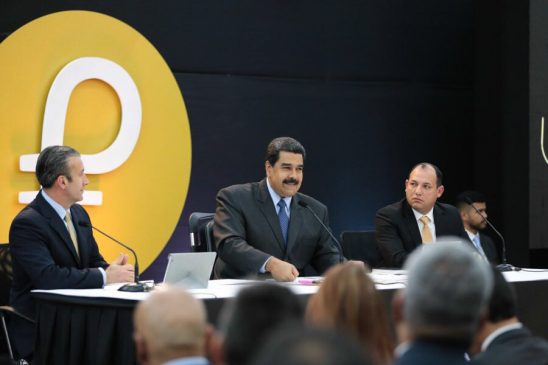Venezuela’s oil-backed cryptocurrency Petro (PTR) appears to be a “blatant” copy of Dash, as it has the same mining algorithm, similar features, and a part of its whitepaper appears to have been lifted from that of the privacy-centric cryptocurrency.
As first pointed out by Ethereum developer Joey Zhou on Twitter, the oil-backed cryptocurrency’s whitepaper has on its 11th page an image that appears to have been copied directly from Dash’s Github repository.
Digging deeper into the oil-backed cryptocurrency’s whitepaper appears to show the Venezuelan government took more than just an image from the 12th-largest cryptocurrency by market cap.
In the document, the government explains the cryptocurrency will use the X11 mining algorithm, just like Dash does, and will include an “Instant Send” feature that, per the whitepaper, is active by default.
While the Instant Send feature is present in Dash, Venezuela touts it’s one of Petro’s “most important characteristics.” The whitepaper reads:
“One of the most important characteristics of the Petro, is the instantaneous sending (less than 5 seconds) of the transactions, which represents an innovative advance with a significant impact compared to existing cryptocurrencies. This feature is activated by default and will work from the first transaction, adding the address to a blank list.”
The Petro will have a 4MB block size, with 60 seconds between each block. Its consensus algorithm will be a hybrid between Proof-of-Work (PoW) and Proof-of-Stake (PoS). The document details the network will have masternodes (Nodos Maestros), which will “make decisions in the network and support transactions carried out by themselves.”
Curiously, Dash’s network is well-known for having masternodes, so much so that — according to Masternodes.online — it’s by far the number one legitimate cryptocurrency that utilizes them, an achievement that likely wasn’t hard, since many cryptocurrencies with masternodes are alleged to be scams.
Dash splits its network’s rewards between masternodes (45%), miners (45%), and its treasury (10%). The Petro is set to distribute 85% of the network’s rewards to masternodes, with 15% returned to the user in an “initial phase.”
This model, per the whitepaper, can be at any time changed for the “network’s convenience” by the SUNACRIP, an organization created to “regulate the activities that are executed by natural and/or legal persons connect to cryptoasset.”
Petro’s growth
As CCN has reported, the Venezuelan government has been giving the Petro various use cases, presumably in an attempt to pump demand. Earlier this year, it revealed it “may” charge for exports in it, and subsequently ordered local banks to adopt it.
The oil-backed cryptocurrency has been deemed an official alternate currency in the country. To make it easier for Venezuelans, Venezuela’s central bank has launched an app to convert bolivars to the Petro-pegged bolivar soberano, a convential fiat currency.
Recently, the country’s leader, Nicolás Maduro, revealed the Petro’s public sale will be in November, and that its official website has been launched. The cryptocurrency’s wallet app is now live on Google Play.
The oil-backed crypto has been widely criticized. The century-old think tank Brookings Institute claimed it undermines legitimate cryptocurrencies as its pre-sale was essentially a way for the government to bypass international sanctions and bring in foreign capital.
Editor’s Note: Some statements have been translated from Spanish.
Featured image from @NicolasMaduro
Follow us on Telegram or subscribe to our newsletter here.
• Join CCN’s crypto community for $9.99 per month, click here.
• Want exclusive analysis and crypto insights from Hacked.com? Click here.
• Open Positions at CCN: Full Time and Part Time Journalists Wanted.




